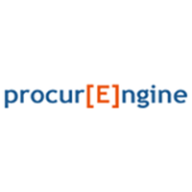
If you want to make some extra money or start your business buying and selling, online auctions are a great place to start, and there are plenty of savvy sellers out there who have discovered they can turn a pretty profit through these marketplaces.
Of course, as online auctions grow in popularity, more people want to get in on the action to get a piece of the proverbial money pie, and there’s always room for more people to join the fray. The key to success is to recognise that making a profit through auctions is all about your work.
What Is An E-Auction?
E-auction software procurement is a conflict supplier process that provides a contract for the processes ion system. In the past, the manufacturing process meant that the supplier price dropped. In some cases, this may be a significant result, but it turned out that there are several problems when the minimum bid spreads. This means that the lowest bidder who has a contract has limited the growth capabilities of the enterprise and can be successful for the current service. Furthermore, this kind of economic compatibility felt its value was not satisfied. Therefore, in recent years, auctions have evolved from simply looking for the lowest prices to more comprehensive offerings that focus on all aspects of product delivery. However, this can make it difficult for businesses to determine which vendor to order from.
Also Read: 4-Steps to get Best Prices in e-Auctions
We give our four tips to create an improved Eratrice experience.
Distinguishing between prices and value
There is a contrast between service prices and service quality. If you just made a price, you may be bad for the quality of goods and services. This error can be handed over to your business customers received from worse quality. This result may be a lousy evaluation and a lousy reputation. How much do you want to revise the bad reputation to sacrifice your business costs? Cross Country Key is not a better business decision, but the more expensive supplier quality is high?
Define requests and purposes
One of the keys to success in any bid process is to know what you want to achieve. You may want a better price for your product and service, but you may want to increase the quality of the received product. It is essential that you need to document all the requirements that bidders have to meet them. It allows you to insert into the relevant pitch, and you can stop what you want to waste time you read the indecent proposal. If you take these goals, it is essential to evaluate the bidder’s bid.
Some may look good, but it is not necessary if they do not offer what they want. They will be disappointed with the final result.
Invite RFI to open all potential suppliers.
Do not stop the potential supplier from reacting to RFI. Not all new offers of goods and services must come from the current supplier. New suppliers may provide a variety of processes that can give good transactions. If you receive information from all potential suppliers, carefully remove the inappropriate supplier. This will make the next step for your company easier.
Follow-through
It is always the best practice to ensure that you can quickly conclude negotiations and contract assignments. This cancels the conditions specified in the auction and eliminates the need to restart the process.
What is the future of e-Commerce?
Though it may appear that e-Commerce will reach market saturation shortly, analysts strongly disagree. E-Commerce continues to grow and is expected to expand exponentially in both B2C and B2B markets.
The continued development of e-Commerce platforms across horizontal and vertical markets is critical to growth. ABC has created and launched custom e-marketplaces, including forward and reverse online e-auctions, in energy, renewable fuels, retail, telecom, construction, and finance. Our e-auction software procurement may assist you, or your company is capitalising on a growing market that isn’t going away anytime soon. We have the best e bidding software, which will help you.
Also Read: Best e-Auction Platform for Procurement Professionals
